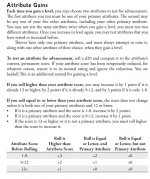Every race in 2E had a minimum and maximum ability score which the ability scores had to fall within prior to racial ability score modification being applied. Table 7 in the 2E PHB has the core game racial ability requirements.
Before a race could be considered, this chart was supposed to be referred to, and then racial ability score modifications were applied, and then the modified scores were used to determine class availability. Oddly, dwarves and halflings were the most restrictive with minimums >9 and maximums <18.
As more races were added, these tables were updated as the game progressed.

